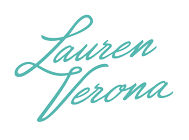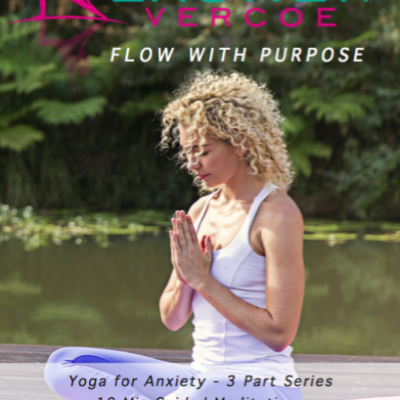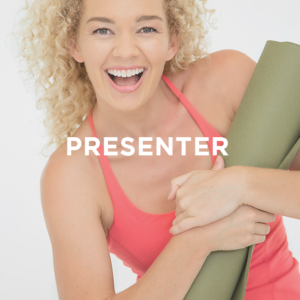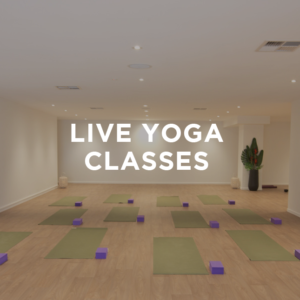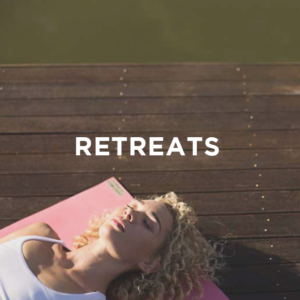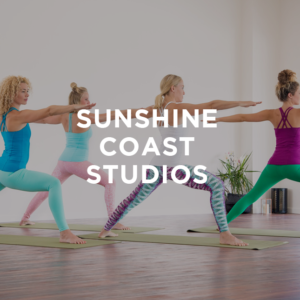It is no surprise that medical experts are proving what we tend to already know to be true- that sitting in a desk chair all day can lead to significant health issues, both physical and mental. Sore neck, back pain, tight hips, hunched shoulders, eyestrain and headaches are all the usual consequences of sitting at a computer for 8 hours a day. Between sitting at your office desk and having your head down using your smart phone, postural damage and spinal misalignment are common issues in the modern world.
Yoga poses that target areas of stiffness and tension can be an effective way to counterbalance these common workplace issues. It is easy to revive and rejuvenate your body with a simple yoga sequence that stretches and strengthens the most triggered areas. You don’t need to be an advanced yogi, and even just fifteen minutes can do wonders to open up your body and alleviate pain. Often stress in the body is accumulative and you may not initially notice the harmful effects of your daily workplace environment until an injury sets in. So taking precaution is certainly advantageous in the long run and may just save you from large chiropractic bills!
While yoga can assist the daily duress placed on the physical body, it can also positively affect your emotional and mental wellbeing. Yoga helps to negate stress and anxiety, and induce feelings of tranquility and calmness. Numerous studies have shown how yoga, meditation and breathing practices can help to counterbalance the body’s reactions to stress. These simple techniques can help to lower blood pressure, improve sleep, assist concentration, boost immunity, balance emotions, assist digestive distress, and trigger deeper emotions of joy, contentment and self-assuredness.
Try starting with some of these simple yoga poses below. You can do these poses before, after or even during work (if your work space allows!) Remember to also get up and stretch, stay hydrated, take short walks, and practice mindful breathing throughout the day. These are all simple and effective ways to maintain a healthy body and mind while you adhere to the daily demands of your 9-5.
Downward Facing Dog (Adho Mukha Svanasana)
Downward-facing dog is a holistic pose that stretches and strengthens many different parts of the body. It reduces tension in the shoulders, relaxes the neck and increases blood flow to the brain. This pose is also particularly good for stretching out the wrists and hands, which may become sore or tired from hours of typing.
To come into the pose, start on all fours and stretch your hands out in front and you. Lift the hips and ground the feet at hips-width apart into the floor so that you are in an inverted V position. Relax the neck and press evenly into hands and feet as your focus on long even inhalations and exhalations.
Cat & Cow Pose (Marjaryasana & Bitilasana)
Cat-cow movements open up the back and stretch the spine. This pose opens the chest, relieves lower back tension and helps to align the spine. Start in tabletop with your hands and knees on the floor. On the inhale, round the spine and curve up into your cat pose. On the exhale, arch the back and lift the chest to come into a cow pose. Repeat these movements on the breath for at least 5 rounds. You can then lift the knees to come into downward facing dog again, or keep the knees on the floor and stretch back into child’s pose which also stretches the spine, neck and shoulders.
Cobra Pose (Bhujangasana)
Cobra pose is great for opening the chest and shoulders while strengthening the spine. This pose is a very accessible back bend for most people and is a perfect release from desk work.
Lie on your belly with your legs side by side. Tuck your elbows in to the side of the chest and then raise your chest by pushing up into your hands on the mat. Lift as high as you feel comfortable without any pain or stress in the back or neck. Keep the shoulders drawn down and the crown of the head lifting towards the ceiling. Breathe deeply for 5-10 breaths before lowering back to the ground.
Standing Forward Fold (Uttanasana)
A forward bend initiates a sense of calmness in the body, making it therapeutic for stress or anxiety. This forward bed releases the neck, stretches the hamstrings and releases the lower back.
Stand with your feet at hip distance apart and slowly bend forward from the hips as you reach the crown of your head towards the floor. Bend at the knees slightly if your hamstrings are tight. Breathe and relax for 3-5 breath cycles.
Low Lunge (Anjaneyasana)
Low Lunge stretches the psoas muscle, which is in constant contraction while sitting in a chair. This pose can also help relieve sciatica pain, as well as stretch the legs, open the chest and stretch the arms.
From downward facing dog, step your right foot forward between your hands. Lower the back knee down and release the top of the back foot on the floor. Lift your torso and rest your hands on your thigh or raise your arms into the air if you feel balanced. Hold for three breaths and then swap sides. As you become more familiar with this pose, you can also lift the back knee off the floor which also works on strength and balance.
Seated Spinal Twist (Arda Matsyendrasana)
This pose is great for relieving tension in your lower back and also for detoxification and assisting with digestion, which can often be troubled by sitting at a desk all day.
Begin seated on your mat with your legs extended in front of you. Cross your right foot over your left knee and plant the sole of the foot on the floor. Reach your right arm behind you, and place your palm on the floor. Cross your left elbow over your outer right thigh and twist to your right. Keep your spine long and your neck comfortable. Remain for five breaths and then swap sides.
Half Pigeon Pose (Eka Pada Rajakapotasana)
The hips can get very tight from long hours of sitting. Pigeon pose is a great way to open the hips and also release the lower back. This pose is a great way to calm the mind and offer deep relaxation.
Start in downward facing dog and bring your right knee towards the front of the mat, trying to bend the front leg at a 90-degree angle to the mat. The left leg remains stretched out behind you. Both sit bones should be on the mat. Lengthen the spine and then fold forward over the bent leg to lower your face towards the floor. Support your body with your forearms, or as your hips open, come to rest your forehead on the mat. You can also rest your forehead on a block. This pose should not hurt your knees at all. Breathe for five cycles and then swap sides.
Bound Angle Pose (Baddha Konasana)
This is another great pose to help open the hips and ease sciatica discomfort that is common from sitting. As a forward bend, this pose is also relaxing and soothing for the mind.
To get into the pose, sit up tall with the soles of the feet touching and knees spread open. Clasp your hands around your feet and very gently use your arms to lower the knees towards the floor as you bend forwards. Breathe here for five long breaths.
Corpse Pose (Savasana)
Savasana is an important asana at the end of any yoga sequence. It allows the body to integrate the poses and find rest and relaxation on a deep healing level.
Lay on your back with your arms by your sides and legs outstretched. Allow your whole body to relax and sink into the floor. For added comfort you can use an eye pillow to cover your eyes and pop a bolster or pillow under the knees. If it’s cold, use a blanket so you can be completely comfortable. Remain here for at least five minutes, trying to keep the mind as relaxed as the body. Savasana helps to ease anxiety, reduce headaches, lower stress levels and boost mood levels.
Want to practice LIVE yoga classes from the comfort of your home or workplace?
Visit and join me on the mat! http://bit.ly/aliveyogi
